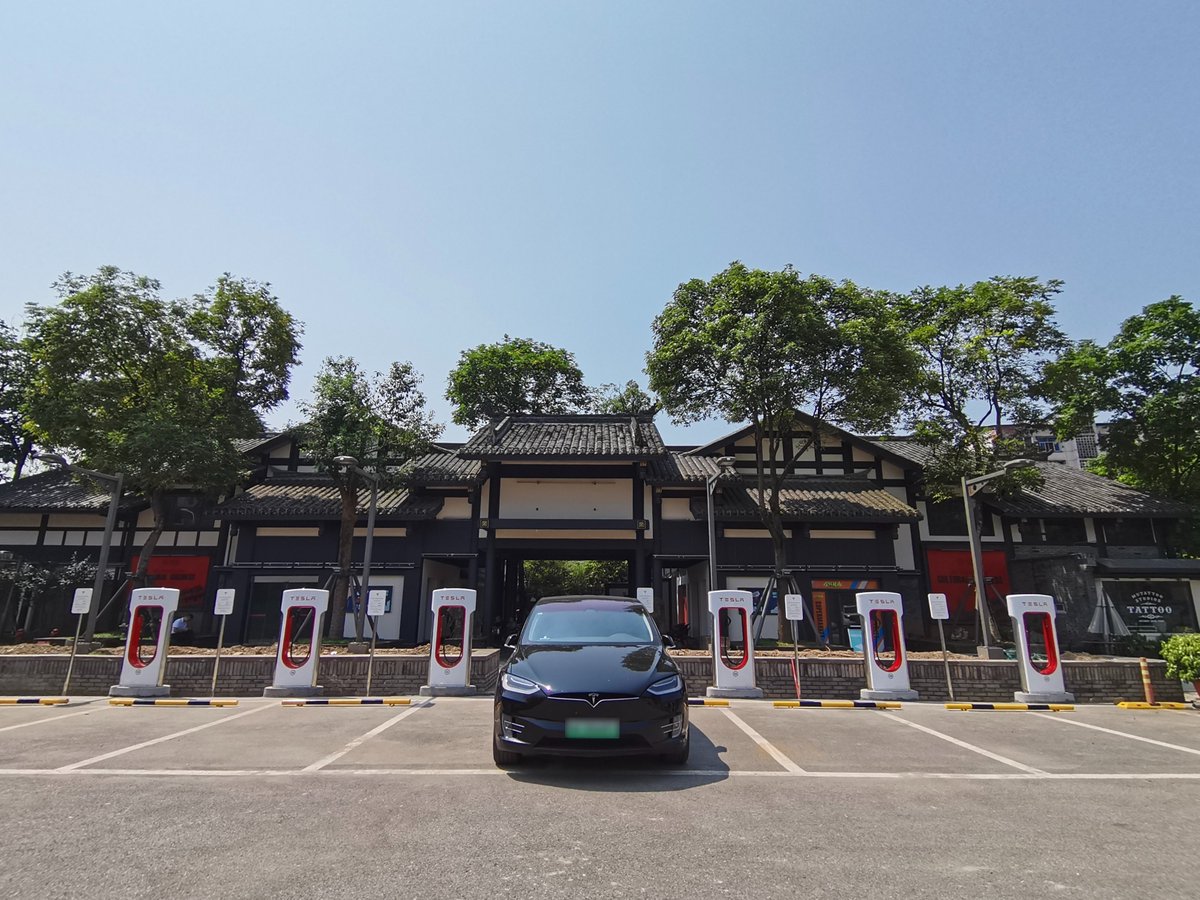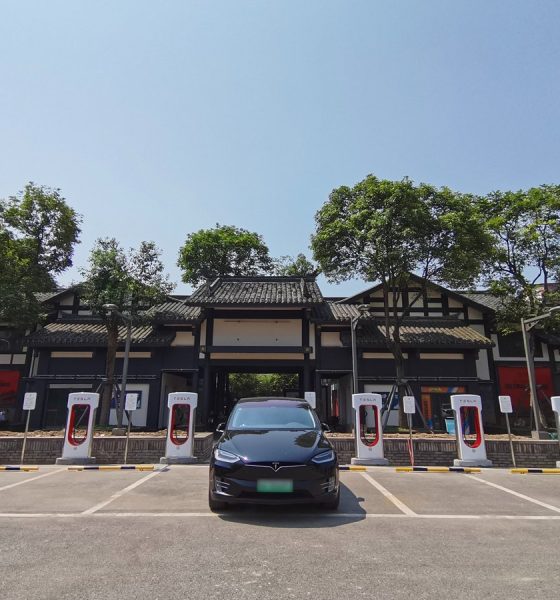Tesla recently announced they had placed their 40,000th Tesla Supercharger, making them the world’s most extensive DC fast charging network. But where will the company expand to next?
Like all other companies currently producing electric vehicles, Tesla has always faced the issue of offering charging to its buyers. Even today, with Tesla’s supercharging network being as extensive as it is, it is nowhere near the scale of gas stations available to ICE vehicles. Ultimately, this leads to a poorer ownership experience for EV drivers. Looking globally, there are a few areas where Tesla may want to expand first.
40k Superchargers around the world — and counting pic.twitter.com/w6tShTkwPA
— Tesla Charging (@TeslaCharging) November 22, 2022
First, it is essential to recognize that the Supercharger network has requests for new charging locations everywhere, and it will likely be working on expanding its network for years to come. The best thing that Tesla can do is intelligently place upcoming chargers. Below are just some of the challenges and opportunities that Tesla may find helpful in the near future as the Supercharger network grows.
North America –
Tesla has a massive presence in the North American market, particularly in the United States, and one of the primary reasons for the company’s success has been its extensive Supercharger network. But even here, Tesla will need to expand as more and more people switch to Tesla products by the day.
Foremost is the concern about city/urban charging. Because most people don’t have access to charging at their homes in dense urban areas, they are forced to use Supercharging locations. And while Tesla has already focused on making charging available in these communities, the daily lines for charging and the enraged Twitter posts indicate that more will be needed as soon as possible.
At the same time, ensuring that charging is located in rural areas is another concern. People in these communities have the opposite problem as those who are in the cities. While they can often easily charge at home, they lack access even to Tesla destination charging near them, effectively forcing them to drive far out of their way to charge their vehicles quickly.
Finally, while the United States and Canada have been serviced fairly well in terms of Tesla charging, Mexico lags years behind in terms of development. Despite having a multiple times bigger population than Canada, Tesla Superchargers are exceedingly rare outside of Mexico City. Hopefully, by introducing more charging infrastructure to the country, Mexico can also grow the demand for electric vehicles.
Europe –
While North America and China have seen dramatic growth in Supercharging locations, Europe has seen more conservative growth, mirroring the demand for Tesla products on the continent. And while Europeans have a wealth of options for electric vehicles (certainly more than in the United States), Tesla should consider an expansion of charging in Europe as a form of leverage to entice buyers away from other brands from Stellantis, Volkswagen Group, and Renault Group.
The three major markets on the continent, France, Germany, and the United Kingdom, are likely on the top of the list for Tesla. The company entered these countries first as they came to the European market, yet with exponential demand for their products, they will be pushed by consumers to construct more chargers here first.
At the same time, countries that Tesla has only recently expanded to, including Spain, Italy, and Portugal, will be looking for more charging. And without Tesla’s support in developing that infrastructure, Tesla risks losing customers to competitors who can offer a better charging experience on CCS.
Asia –
The Asian market is far more bifurcated than any other market. The American EV giant has correctly seized on the demand for electric vehicles in China, the world’s biggest car market. And from their investment, they have become the largest western EV brand in the country. However, other significant markets, including Japan, South Korea, and much of South East Asia, remain lacking both Tesla Supercharging locations and demand for electric vehicles generally.
Expansion in China will likely be an ongoing process. A country with over 1 billion people will always have problems with supply. And perhaps this is great news for Tesla as they have an excellent opportunity to grow their market share in the blossoming economy.
Simultaneously, Japan has a similarly fledgling demand for electric vehicles. Despite the country’s reluctance to accept the technology, sales have steadily grown as consumers have become more comfortable with the option. As the third largest economy and one that hasn’t entirely accepted electric vehicles into the norm yet, Tesla should see the island nation as an untouched source of fresh customers.
Overall, Tesla finds itself in a target-rich environment. Any supercharger they place will certainly be helpful for someone. We can only hope that as charging becomes a more profitable venture, Tesla will be more incentivized to place more DC fast chargers and ensure more charging availability for everyone.
What do you think of the article? Do you have any comments, questions, or concerns? Shoot me an email at william@teslarati.com. You can also reach me on Twitter @WilliamWritin. If you have news tips, email us at tips@teslarati.com!

Elon Musk
Elon Musk and Tesla AI Director share insights after empty driver seat Robotaxi rides
The executives’ unoccupied tests hint at the rapid progress of Tesla’s unsupervised Robotaxi efforts.

Tesla CEO Elon Musk and AI Director Ashok Elluswamy celebrated Christmas Eve by sharing personal experiences with Robotaxi vehicles that had no safety monitor or occupant in the driver’s seat. Musk described the system’s “perfect driving” around Austin, while Elluswamy posted video from the back seat, calling it “an amazing experience.”
The executives’ unoccupied tests hint at the rapid progress of Tesla’s unsupervised Robotaxi efforts.
Elon and Ashok’s firsthand Robotaxi insights
Prior to Musk and the Tesla AI Director’s posts, sightings of unmanned Teslas navigating public roads were widely shared on social media. One such vehicle was spotted in Austin, Texas, which Elon Musk acknowleged by stating that “Testing is underway with no occupants in the car.”
Based on his Christmas Eve post, Musk seemed to have tested an unmanned Tesla himself. “A Tesla with no safety monitor in the car and me sitting in the passenger seat took me all around Austin on Sunday with perfect driving,” Musk wrote in his post.
Elluswamy responded with a 2-minute video showing himself in the rear of an unmanned Tesla. The video featured the vehicle’s empty front seats, as well as its smooth handling through real-world traffic. He captioned his video with the words, “It’s an amazing experience!”
Towards Unsupervised operations
During an xAI Hackathon earlier this month, Elon Musk mentioned that Tesla owed be removing Safety Monitors from its Robotaxis in Austin in just three weeks. “Unsupervised is pretty much solved at this point. So there will be Tesla Robotaxis operating in Austin with no one in them. Not even anyone in the passenger seat in about three weeks,” he said. Musk echoed similar estimates at the 2025 Annual Shareholder Meeting and the Q3 2025 earnings call.
Considering the insights that were posted Musk and Elluswamy, it does appear that Tesla is working hard towards operating its Robotaxis with no safety monitors. This is quite impressive considering that the service was launched just earlier this year.
Elon Musk
Starlink passes 9 million active customers just weeks after hitting 8 million
The milestone highlights the accelerating growth of Starlink, which has now been adding over 20,000 new users per day.

SpaceX’s Starlink satellite internet service has continued its rapid global expansion, surpassing 9 million active customers just weeks after crossing the 8 million mark.
The milestone highlights the accelerating growth of Starlink, which has now been adding over 20,000 new users per day.
9 million customers
In a post on X, SpaceX stated that Starlink now serves over 9 million active users across 155 countries, territories, and markets. The company reached 8 million customers in early November, meaning it added roughly 1 million subscribers in under seven weeks, or about 21,275 new users on average per day.
“Starlink is connecting more than 9M active customers with high-speed internet across 155 countries, territories, and many other markets,” Starlink wrote in a post on its official X account. SpaceX President Gwynne Shotwell also celebrated the milestone on X. “A huge thank you to all of our customers and congrats to the Starlink team for such an incredible product,” she wrote.
That growth rate reflects both rising demand for broadband in underserved regions and Starlink’s expanding satellite constellation, which now includes more than 9,000 low-Earth-orbit satellites designed to deliver high-speed, low-latency internet worldwide.
Starlink’s momentum
Starlink’s momentum has been building up. SpaceX reported 4.6 million Starlink customers in December 2024, followed by 7 million by August 2025, and 8 million customers in November. Independent data also suggests Starlink usage is rising sharply, with Cloudflare reporting that global web traffic from Starlink users more than doubled in 2025, as noted in an Insider report.
Starlink’s momentum is increasingly tied to SpaceX’s broader financial outlook. Elon Musk has said the satellite network is “by far” the company’s largest revenue driver, and reports suggest SpaceX may be positioning itself for an initial public offering as soon as next year, with valuations estimated as high as $1.5 trillion. Musk has also suggested in the past that Starlink could have its own IPO in the future.
News
NVIDIA Director of Robotics: Tesla FSD v14 is the first AI to pass the “Physical Turing Test”
After testing FSD v14, Fan stated that his experience with FSD felt magical at first, but it soon started to feel like a routine.

NVIDIA Director of Robotics Jim Fan has praised Tesla’s Full Self-Driving (Supervised) v14 as the first AI to pass what he described as a “Physical Turing Test.”
After testing FSD v14, Fan stated that his experience with FSD felt magical at first, but it soon started to feel like a routine. And just like smartphones today, removing it now would “actively hurt.”
Jim Fan’s hands-on FSD v14 impressions
Fan, a leading researcher in embodied AI who is currently solving Physical AI at NVIDIA and spearheading the company’s Project GR00T initiative, noted that he actually was late to the Tesla game. He was, however, one of the first to try out FSD v14.
“I was very late to own a Tesla but among the earliest to try out FSD v14. It’s perhaps the first time I experience an AI that passes the Physical Turing Test: after a long day at work, you press a button, lay back, and couldn’t tell if a neural net or a human drove you home,” Fan wrote in a post on X.
Fan added: “Despite knowing exactly how robot learning works, I still find it magical watching the steering wheel turn by itself. First it feels surreal, next it becomes routine. Then, like the smartphone, taking it away actively hurts. This is how humanity gets rewired and glued to god-like technologies.”
The Physical Turing Test
The original Turing Test was conceived by Alan Turing in 1950, and it was aimed at determining if a machine could exhibit behavior that is equivalent to or indistinguishable from a human. By focusing on text-based conversations, the original Turing Test set a high bar for natural language processing and machine learning.
This test has been passed by today’s large language models. However, the capability to converse in a humanlike manner is a completely different challenge from performing real-world problem-solving or physical interactions. Thus, Fan introduced the Physical Turing Test, which challenges AI systems to demonstrate intelligence through physical actions.
Based on Fan’s comments, Tesla has demonstrated these intelligent physical actions with FSD v14. Elon Musk agreed with the NVIDIA executive, stating in a post on X that with FSD v14, “you can sense the sentience maturing.” Musk also praised Tesla AI, calling it the best “real-world AI” today.










